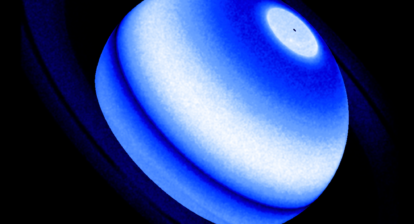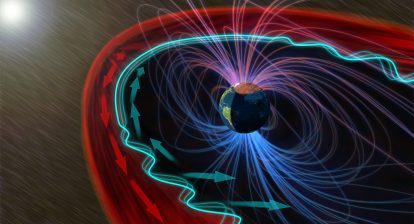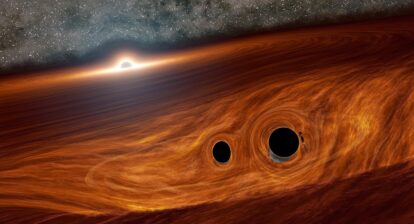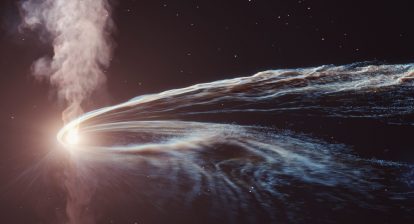There is a new X-ray telescope out there and it has sent back images of its first look into the Universe. It is called the Imaging X-Ray Polarimetry Explorer (IXPE), and it is a joint project between NASA and the Italian Space Agency.
For its first image it focussed on Cassiopeia A, a popular explosion that took place inside our Milky Way – one of the galaxies most well-studied objects. This remnant of a stellar explosion is located 11,000 light-years away and it is thought that it was actually observed to explode in the 1690s. Before it exploded the massive parent star of this remnant ejected material in its outer layers, which created a surrounding cloud. When the supernova occured, the shock wave collided with this dense cloud instead of space. This extremely intense environment therefore produces magnetic fields and shock waves, accelerating electrons and giving rise to high-energy X-rays.
Cassiopeia A emits radiation in many wavelengths across the electromagnetic spectrum, including in radio, x-ray, as well as optical. It has already been imaged by NASAs Chandra X-ray Space Telescope.

A 2005 composite of Cassiopeia A, combining data from Hubble, Spitzer and Chandra. Image: NASA/JPL-Caltech
The image from IXPE however, is revealing the object like never before, as can be seen in the featured image. According to NASA, “In the image above, the saturation of the magenta color corresponds to the intensity of X-ray light observed by IXPE. It overlays high energy X-ray data, shown in blue, from NASA’s Chandra X-Ray Observatory. Chandra and IXPE, with different kinds of detectors, capture different levels of angular resolution, or sharpness. An additional version of this image is available showing only IXPE data. These images contain IXPE data collected from Jan. 11 to 18.”
“The IXPE image of Cassiopeia A is as historic as the Chandra image of the same supernova remnant,” said Martin C. Weisskopf, the IXPE principal investigator based at NASA’s Marshall Space Flight Center in Huntsville, Alabama. “It demonstrates IXPE’s potential to gain new, never-before-seen information about Cassiopeia A, which is under analysis right now.”
One of the key measurements that will be made with IXPE is polarization, which is a way of looking at how X-ray light is oriented as it travels through space. As per NASA’s mission update: “The polarization of light contains clues to the environment where the light originated. IXPE’s instruments also measure the energy, the time of arrival, and the position in the sky of the X-rays from cosmic sources.”
“The IXPE image of Cassiopeia A is bellissima, and we look forward to analyzing the polarimetry data to learn even more about this supernova remnant,” said Paolo Soffitta, the Italian principal investigator for IXPE at the National Institute of Astrophysics (INAF) in Rome.
The supernova remnant is about 10 light-years in diameter and the polarization data from Cassiopeia A will, for the very first time, allow scientists to see how the amount of polarization varies across it. Scientists are also using the date to create the first-ever X-ray polarization map of this object, which will reveal new information about the production of X-rays at Cassiopeia A.

IXPE X-ray light intensity map of Cassiopeia A. Image: NASA
“IXPE’s future polarization images should unveil the mechanisms at the heart of this famous cosmic accelerator,” said Roger Romani, an IXPE co-investigator at Stanford University. “To fill in some of those details, we’ve developed a way to make IXPE’s measurements even more precise using machine learning techniques. We’re looking forward to what we’ll find as we analyze all the data.”
IXPE launched on a Falcon 9 rocket from Cape Canaveral, and now orbits 370 miles (600 kilometers) above Earth’s equator. The mission is a collaboration between NASA and the Italian Space Agency with partners and science collaborators in 12 countries. Ball Aerospace, headquartered in Broomfield, Colorado, manages spacecraft operations. It will continue to study the polarization of X-rays from neutron stars, pulsars, magnetars, black holes, and quasar galaxies in the Milky Way, as well as the wider Universe.







